Last Chance to Catch NYC's Holiday Notalgia Train
We met the voices of the NYC subway on our nostalgia ride this weekend!


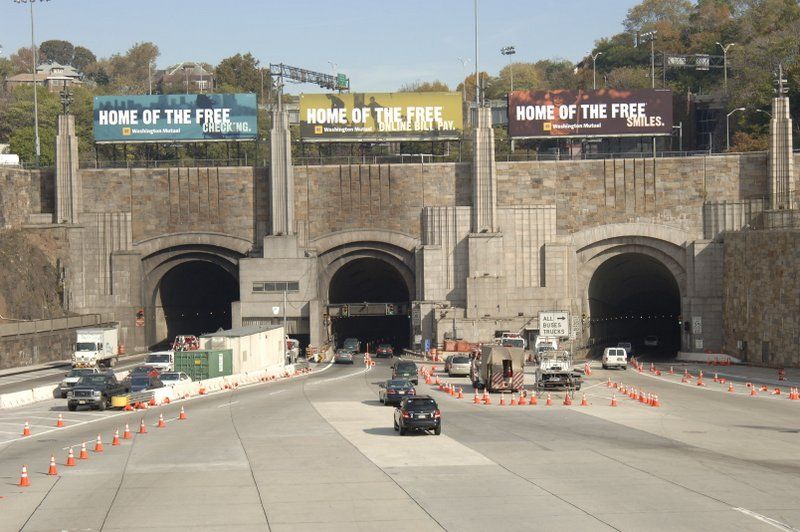
Opening to traffic for the first time in 1937, the Lincoln Tunnel connecting Weehawken, New Jersey to Midtown Manhattan was hailed as the next great engineering triumph of the decade. The New Deal’s Public Works Administration provided funds for its construction in 1934, fresh off the success of the southern Holland Tunnel, the first mechanically ventilated underwater automobile tunnel to be built under the Hudson River. A second tube was built shortly after the Lincoln Tunnel’s first, with a third built in the late 1950s due to increased traffic. To this day, the three tunnels service hundreds of thousands of cars and buses coming in and out of New York City. Here are the top 10 secrets of the Lincoln Tunnel!
Elephants going through another New York City tunnel, the Midtown Tunnel
On May 17, 1971, a rail workers’ strike stranded a number of circus performers and animals from The Greatest Show on Earth about 5 miles away from Madison Square Garden, where they were set to perform that night. While most of the caravans made the rest of the journey by truck, a convoy of 19 elephants, a zebra, a llama, and a pony crossed into New York through the Lincoln Tunnel. No word on how, once they reached the other side, the handlers were able to get the animals eight blocks down 8th Avenue to the Garden on 34th Street.
A caravan of animals through New York City tunnels didn’t used to be such a rare occurrence, in fact, it was an annual tradition. Between the years 1981 to 2011, the Queens-Midtown Tunnel was closed one night each spring for the annual Ringling Bros. and Barnum & Bailey Circus Animal Walk.
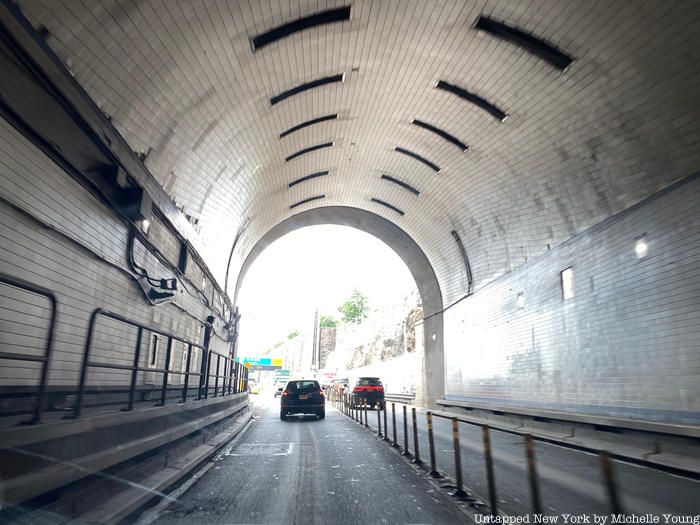
Omero Catan is known among the obscurest annals of New York History as Mr. First. He earned the nickname by, quite literally, being the first to a lot of New York’s landmark openings. He was the first, among 500 other notable things, to cross the George Washington Bridge when it opened in 1931, the first to use the 8th avenue subway when it opened the next year, the first to skate in Rockefeller Plaza in 1936, and the first to lead the public through the newly opened Lincoln Tunnel in 1937, parking near Weehawken at 10 p.m. the night before to be sure. Years later, his brother, Michael, was selected to be the first to drive through the Tunnel’s second line in 1945.
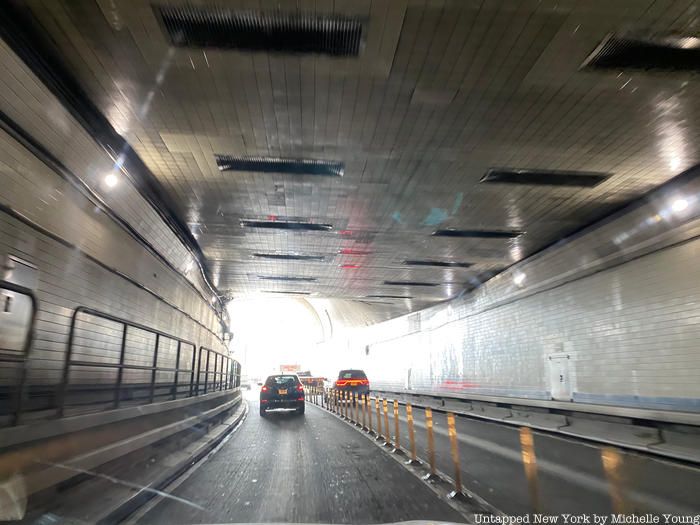
The Lincoln and Holland Tunnels were considered, after the World Trade Center, to be the most high-risk targets for an incoming terrorist attack, given their cramped space and their position under hundreds of feet of concrete, dirt, and seawater. To this day, all cars going through either end of either tunnel are monitored carefully. Its status on the list of possible terrorist targets still may not explain the $14 fee each car pays for access to the tunnel, but is nevertheless a scary thought.
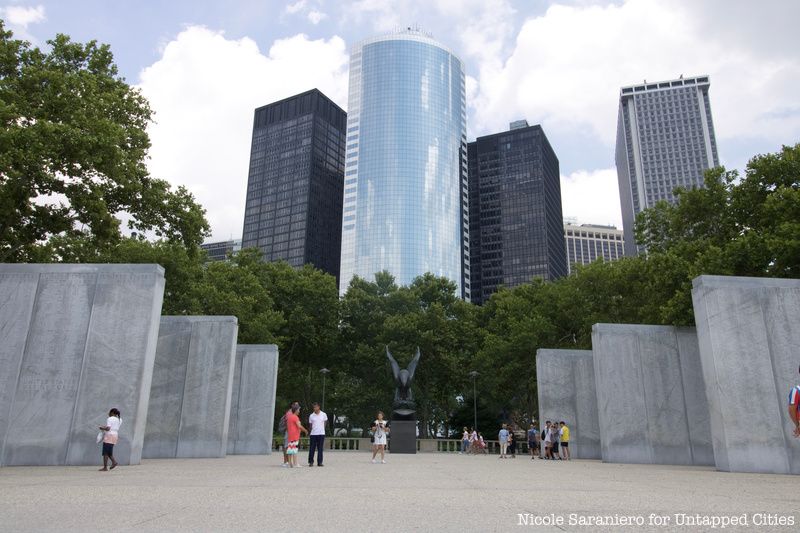
According to New York Magazine, the Hudson River current has historically stayed closed to the edge of Lower Manhattan’s edge. The construction of Battery Park City, which juts out into the river, rerouted part of the current. It is now located more toward the river’s center and is uncovering much of the soil lying on top of the walls and ceiling of the Lincoln Tunnel. As of 2009, some parts of the tunnel’s walls have seen a soil coverage decrease of about 25%, making them far more susceptible to shifting or cracking in the coming years (yikes).
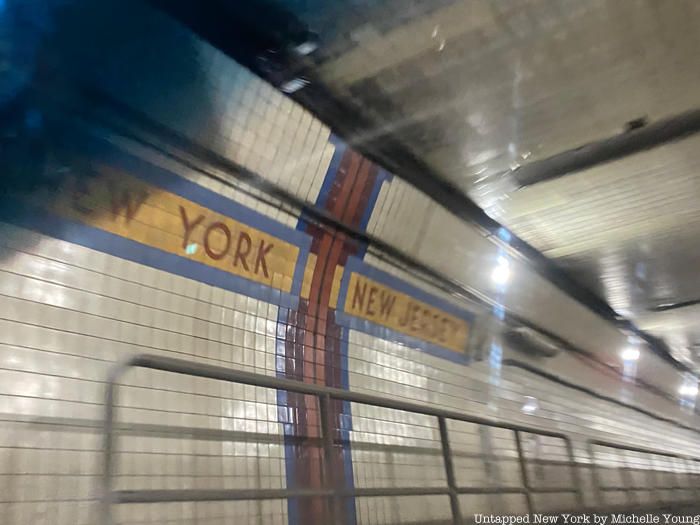
Few events shut down the Lincoln Tunnel to cars, but the annual Lincoln Tunnel Challenge is one of them. The race is 5 kilometers through the tunnel from Weehawken to New York and then back to Weehawken. In the past few years, as many as 3,000 runners have participated in the challenge, which raises funds for Special Olympics New Jersey. Though the Tunnel currently bans bikes, it hasn’t stopped some interested individuals from campaigning anyway.
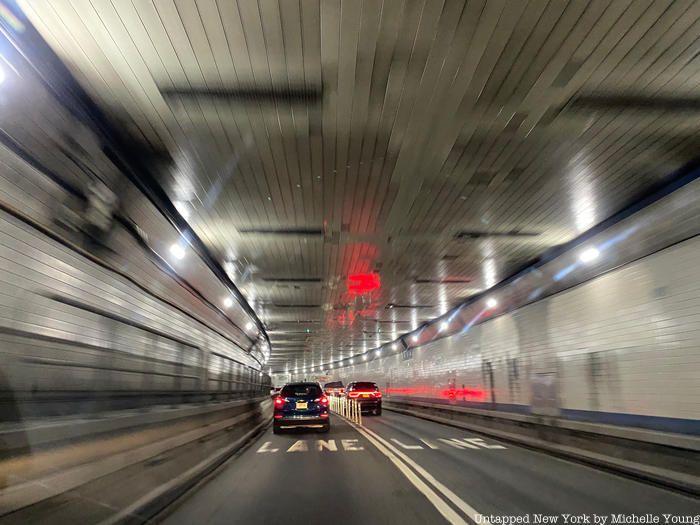
In the afternoon of September 8, 1953, two men who had attempted to rob a house in South Orange, New Jersey were chased away by its residents. Their car’s license plate was relayed to the police. Peter Simon and John Metcalf then escaped into the Lincoln Tunnel and were spotted by transit authorities as they entered.
What ensued was a car chase among traffic through the tunnel, with police commandeering a delivery truck and firing shots at the getaway car as it swerved around other vehicles. In all 28 shots were fired, and the driver, Peter Simon, was shot in the head around three-quarters of the way to the other side. The gunfight was reported by The New York Times the next morning.

Amtrak runs a Hudson River line alongside the Lincoln Tunnel. The New York entrance to the path was occupied by a number of the homeless prior to Amtrak’s line, which started operating in 1991. Due to rising buildings and the need for more underground reinforcement, many were forced out and into above-ground shelters. In 2011, the urban explorer Steve Duncan released a video highlighting many of the underground spots remaining in the city and went deep into the tunnels to find many homeless people still living there.
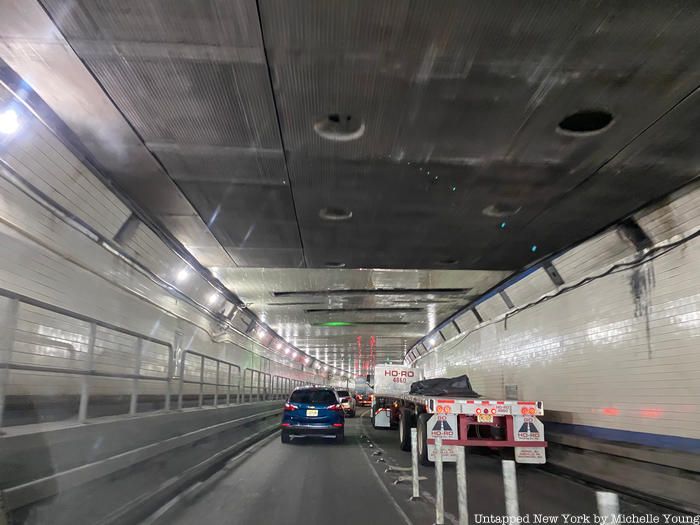
Believe it or not, transit authorities used catwalk cars in the 1950s, similar to those in the Holland Tunnel, to monitor traffic in the tunnels from above. And here we thought those railings on the side of the tunnel were just for show.
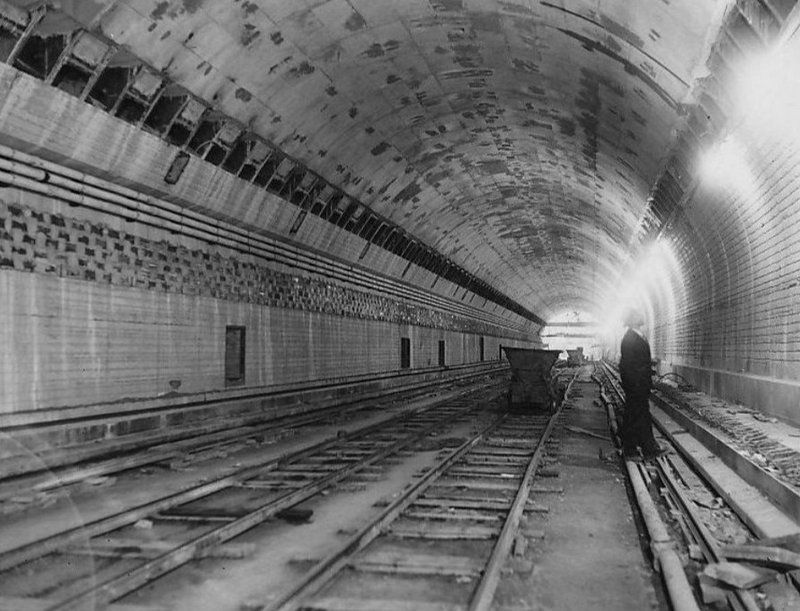
Photo via Wikimedia Commons
Surprisingly enough, building a 1.5-mile tunnel large enough for two lanes of automobiles under a riverbed was a daunting task. The process itself was grueling. To support the cavities workers dug out, they installed a series of 21-ton iron rings set into the walls. The ones who dug the tunnels, called sandhogs, had to use a series of airlocks to depressurize and re-pressurize their bodies while entering a new section of the tunnel. With no ventilation, the air in each pressurized section got stale pretty quick.
The excavation involved digging, lining the walls with the rings, pouring cement into every crease and crack to the keep the water out, and finally moving along to the next airlock. Incidentally, Clifford Holland, chief engineer and namesake of the Holland Tunnel, died of a heart attack at 41 due to the immense stress of the construction as well as the growing toxicity of the air in the airlocks. The Lincoln Tunnel faired better, with no reported work-related deaths.
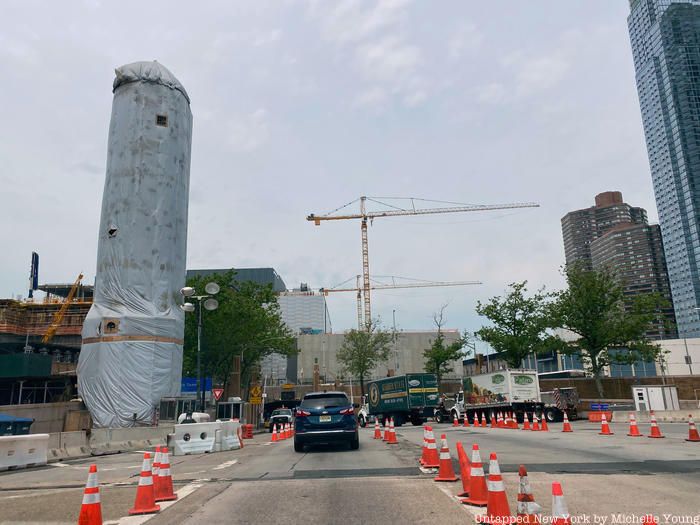
The numbers themselves are quite staggering. The Tunnel is 1.5 miles long, 95 feet underwater at its deepest point, and cost about $1.5 billion to build, adjusting for inflation. On average, it sees upwards of 120,000 cars passing through every day, making it one of the busiest roadways in the country. The Tunnel’s separate bus lane sees about 1,700 buses every morning, primarily bringing its 62,000 commuters to the Port Authority Bus Terminal on 42nd Street.
Next, read about the top 10 secrets of the Statue of Liberty. Get in touch with the author @jinwoochong.
Subscribe to our newsletter